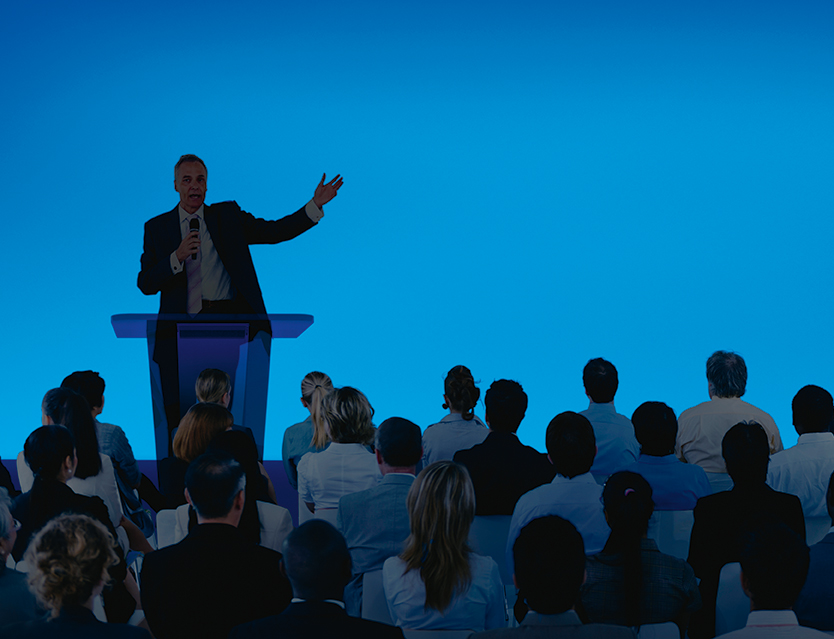Poland at the Center of Events
The Polish conference and event space market is developing dynamically, meeting the needs of both domestic and international event organizers. Year after year, Poland is strengthening its position as a significant player in the European MICE (Meetings, Incentives, Conferences, Exhibitions) sector.
The latest data and industry observations confirm: Poland is not only a cost-effective alternative to Western European markets but also a destination with modern infrastructure and professional services.
Dynamic growth of the MICE market
According to the report “Meetings and Events Industry in Poland 2024,” published by Poland Convention Bureau, the number of reported events in Poland in 2023 increased by as much as 51% compared to 2022. Conferences and congresses stand out in particular, accounting for 54% of all events. This 12% year-on-year growth is a clear sign of trust in Poland as a conference location.
International events are increasingly held in major urban centers: Warsaw, Kraków, Poznań, Wrocław, Gdańsk, and Katowice. Their developed infrastructure, convenient connections to the rest of Europe, and growing experience in serving foreign clients make them
a natural choice for large companies, institutions, and industry organizations.
“The meetings industry in Poland has undergone a significant transformation, evolving from a niche sector into an important element of the national economy. Poland’s accession to the European Union also had a significant impact on this transformation, accelerating a range of key investments that contributed to the dynamic growth and professionalization of the industry. One of the key elements of the transformation was the creation of modern conference and exhibition facilities, as well as the establishment of city and regional convention bureaux,” writes Rafał Szmytke, President of the Polish Tourism Organization, in the introduction to the “Meetings and Events Industry in Poland 2024” report.

What does Poland offer to foreign clients?
- Modern conference infrastructure
Poland has hundreds of modern conference facilities tailored to events of all scales – from intimate business meetings to large-scale congresses and trade shows. For example:
- EXPO Kraków: 13,000 m² of modern space, including exhibition halls and 12 dividable conference rooms.
- Warsaw Expo XXI: one of the largest conference venues in Central and Eastern Europe.
- AmberExpo in Gdańsk, International Congress Centre in Katowice, or ICE Congress Centre in Kraków are just a few examples of complexes meeting international standards.
Most of these venues offer advanced technology (streaming, simultaneous translation, AV systems) and flexible space arrangements.
“The MICE industry we represent is
a dynamic field, constantly evolving in response to changing client needs and new technologies. Over the past 15 years, entirely new trends have emerged in organized events,” says Agata Brożek, Vice President of CWK Operator, managing the G2A Arena in Jasionka near Rzeszów. – “A huge number of events are now hybrid, a trend that emerged after the pandemic but was made possible thanks to the rapid development of modern technologies. This is a response to the growing need for flexibility and accessibility. It allows for broader reach and accessibility for a wider audience. Very attractive for event participants is the use of virtual reality (VR) and augmented reality (AR). These allow organizers to create interactive, often personalized experiences for attendees,” the expert emphasizes in her commentary for the “Meetings and Events Industry in Poland 2024” report.
- Convenient location and accessibility
Thanks to its central location in Europe and a well-developed network of air connections (including LOT and low-cost carriers), Poland is easily accessible to participants from across the continent. Warsaw, Kraków, Gdańsk, Wrocław, and Katowice all have international airports with direct connections to over a hundred European and intercontinental cities.
Another asset is the rapid development of domestic transport, including the rail network – linking major cities within a few hours. - High quality of service – competitive prices
One of the key reasons Poland is gaining in popularity is the high quality of conference services at relatively low costs. Venue rental, catering, technical support, logistics, and accommodation – all are offered at a standard comparable to Western Europe but at significantly more attractive prices.
This allows organizers to scale up their events or invest in additional elements (e.g., networking evenings, sightseeing, integration attractions) without exceeding their budget. - High level of professionalism and service
More and more companies in Poland specialize in comprehensive event management – from PCOs (Professional Congress Organizers) to equipment suppliers and safety or communication experts. High language competence (English, German, French) and openness to the needs of clients from various cultures are other advantages appreciated by foreign entities.
“Fifteen years is the time in which we’ve placed ourselves on the global map and built an image of a safe and attractive destination. More than 215,000 employees, 1% of GDP, or 13 million annual participants are just a few of the figures. It’s important to remember that we still have a lot of work to do to build the Polish meetings industry and show how much it contributes to science, culture, and politics. Meetings are primarily about people, and that’s what we should be most proud of. At the same time, transformation and skilled experience management will help us build our position and shape the future together,” says Prof. Krzysztof Celuch, Rector of the Vistula School of Hospitality, Director of the Experience Design Center in the Meetings Industry and Tourism at the Faculty of Economic Sciences and Management, Nicolaus Copernicus University. - Unique cultural and touristic background
Event organizers are increasingly looking for destinations that – beyond the conference function – offer added value to participants. Poland stands out in this regard:
- historic city centers (Kraków, Gdańsk, Wrocław),
- cultural attractions (museums, concerts, art events),
- proximity to nature (Masuria, the Tatra Mountains, Baltic Sea coast).
As a result, it’s easy to plan accompanying programs that attract and engage participants.
Challenges and perspectives
Despite many strengths, the Polish conference market still faces challenges – particularly in increasing promotion abroad and standardizing service quality in smaller centers. There is also growing emphasis on sustainable event development – with a focus on ecology, recycling, and local service sourcing. In recent years, awareness of sustainability in the meetings industry has significantly increased. More and more organizers are adopting sustainable development practices to minimize their environmental impact. This includes reducing waste, preferring local suppliers, and taking steps to lower CO₂ emissions from participant transport.
“All of us, not just our industry, have strengthened our environmental efforts. This has translated directly into greater emphasis on organizing sustainable events. When producing events, we look for ways to reduce their negative environmental impact – for example, by minimizing plastic use, mandating waste separation, choosing local suppliers, or offsetting CO₂ emissions,” notes Agata Brożek, Vice President of CWK Operator, managing the G2A Arena in Jasionka near Rzeszów.
“Despite dynamic growth, the meetings industry in Poland still faces many challenges, including growing international competition, the need for continued infrastructure modernization, and adaptation to evolving client needs. I’m convinced that thanks to our strong foundation, professionalism, and innovative approach, the meetings industry in Poland has solid ground to continue its development in the future,” emphasizes Rafał Szmytke, President of the Polish Tourism Organization.
Between 2025 and 2030, Poland has a real chance of joining the top tier of European conference destinations – provided it maintains its investment pace, organizational competence, and international visibility.
Conclusion
Poland is currently one of the most promising conference markets in Central and Eastern Europe. On one hand, it offers modern infrastructure, professional service, and competitive pricing; on the other – unique locational and cultural assets. Combined with growing experience in hosting international events, Poland is making an increasingly strong mark on the global MICE industry map.
“We’re seeing changes in the meetings industry: from shifting client expectations to technology development. Among the most notable trends are the rising popularity of hybrid events, which enable flexibility and global accessibility. We also see increasing emphasis on sustainable practices during congress organization, including waste reduction, CO₂ emission cuts, and preference for local suppliers. Additionally, the use of social media for promotion, event coverage, and participant engagement – before, during, and after the event – is growing rapidly. All of this inspires us to continue adapting to a dynamically changing environment,” concludes Andrzej Hulewicz, Vice President of Mazurkas Travel, Mazurkas DMC Poland.






